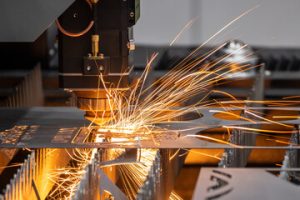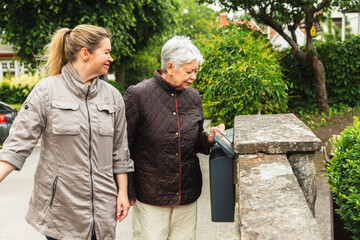Metal craft has always been more than just shaping hard materials. It is the language of strength expressed through art. It connects tradition with innovation, telling stories through texture and form. Today, it stands as a fusion of ancient skill and modern creativity.

From early civilizations to contemporary workshops, metal crafting has undergone dramatic transformation. What was once purely functional is now deeply artistic and symbolic. Objects that served simple purposes now double as intricate works of art. This evolution reflects humanity’s enduring relationship with the material itself. Contact 83MetalCraft LLC for professional help.
The heart of metal craft lies in its process — a combination of precision and patience. Shaping metal requires not just technical skill but also a deep understanding of how it behaves under stress. Craftsmen must learn how temperature, pressure, and timing affect the final outcome. Even a slight misstep can alter the entire result.
The earliest metalworkers discovered techniques by trial and error. They learned how to melt, cast, and hammer raw ore into tools and ornaments. These early practices laid the foundation for an art that continues to evolve today. Despite technological advancements, the core principles remain the same.
In recent decades, metal craft has expanded beyond traditional uses. It is no longer limited to tools, jewelry, or architectural accents. Artists are now exploring abstract sculpture, kinetic installations, and even wearable art. This broadening of scope reflects the limitless potential of the medium.
One fascinating development is the rise of sustainable metal crafting. Makers are repurposing scrap and recycled metals into new creations. This shift not only reduces waste but also adds layers of meaning to the finished pieces. Each object tells a story of renewal and conscious creation.
Technology has also transformed the way artisans work with metal. Precision cutting tools, computer-guided machines, and new welding techniques have opened up possibilities once considered impossible. These innovations allow for finer details, more complex designs, and higher durability. Yet even with machines, the artisan’s touch remains essential.
The beauty of metal craft is that it balances science and artistry. Metallurgy explains how metals react and transform, while design breathes life into raw material. Together, they create pieces that are both functional and aesthetically powerful. This dual nature is what makes metal craft timeless.
Cultural influences play a significant role in shaping the styles and purposes of metalwork. Throughout history, societies have used metal to symbolize power, spirituality, and identity. Modern artisans continue this tradition, infusing their work with cultural narratives and personal stories. In doing so, they preserve heritage while pushing creative boundaries.
The tactile nature of metal craft is one of its greatest appeals. Unlike softer materials, metal demands respect and control. It resists shaping, requiring force and finesse to bend it to the maker’s will. This physical dialogue between artist and material is what gives each piece its soul.
Metal craft has also found a prominent place in contemporary interior design. Minimalist spaces often feature custom metal pieces that add depth and character. These works bridge the gap between utility and decoration, transforming ordinary environments into artistic expressions. Their versatility makes them ideal for both modern and traditional spaces.
Another area where metal craft is flourishing is in public art and installations. Large-scale sculptures and interactive displays made from metal have become landmarks in urban spaces. They withstand the elements while conveying powerful messages. Such works remind us that metal, though rigid, can be deeply expressive.
One of the most compelling trends in metal craft is the integration of mixed media. Artists are combining metal with wood, glass, ceramics, and even textiles to create multidimensional works. This blending of materials reflects a modern desire for complexity and contrast. It also expands the narrative possibilities of each piece.
The educational side of metal craft is also evolving. Workshops and maker spaces are introducing more people to the basics of shaping and designing metal. These spaces foster creativity, collaboration, and experimentation. As a result, new generations are discovering the joy of working with their hands.
Customization has become a major focus for many contemporary metalworkers. Clients seek personalized designs that reflect their tastes, values, and stories. From engraved details to bespoke structural pieces, customization transforms craft into deeply personal art. This growing demand keeps the field both relevant and innovative.
One underestimated aspect of metal craft is its therapeutic potential. The process of heating, hammering, and shaping can be deeply meditative. It requires focus and presence, creating a sense of flow that many find grounding. This blend of creativity and mindfulness is one reason the practice continues to attract enthusiasts.
The economic side of metal craft has also grown significantly. High-quality, handcrafted metal pieces are now highly valued in markets worldwide. They are seen not just as objects but as investments in artistry and tradition. This appreciation has helped sustain small workshops and independent artisans.
However, metal craft is not without challenges. The cost of materials, tools, and energy can be significant. Environmental concerns over mining and production also continue to shape industry practices. Yet these challenges drive innovation, pushing artisans toward more sustainable and ethical approaches.
The future of metal craft lies in its ability to adapt while staying true to its roots. As society embraces digital tools and smart materials, metalwork will evolve to incorporate them. Imagine interactive sculptures that respond to touch or wearable metal art that adapts to temperature. Such innovations will redefine what metal craft can be.
Despite these advancements, the essence of the craft will always remain in the human touch. Machines can cut and mold, but only human hands can imbue a piece with meaning. That emotional connection is what elevates metalwork from manufacturing to art. It is the difference between a product and a legacy.
Collectors and enthusiasts often speak of the “feel” of metal art. There is a weight, a permanence, that comes from knowing the object was shaped by fire and will outlast generations. This durability is not just physical but symbolic. It speaks to the enduring nature of human creativity.
The cultural relevance of metal craft continues to grow in an age obsessed with the disposable. Handcrafted metal pieces offer a counter-narrative — one of longevity, intention, and craftsmanship. They remind us that beauty is not always fast or fleeting. Sometimes it is forged slowly, layer by layer, in the heat of creation.
In many ways, metal craft reflects the human journey itself. It begins with raw potential, faces intense pressure, and emerges transformed. Each hammer strike, each weld, is a testament to resilience and vision. The finished piece is not just metal — it is a record of human determination.
For those drawn to this art form, the journey is as rewarding as the result. Mastery takes years of practice, experimentation, and failure. Yet every mistake teaches something new about the material and about oneself. It is this continuous learning that keeps the craft alive and evolving.
As the world changes, so too will the role of metal craft in our lives. It will continue to blend functionality with artistry, tradition with technology, permanence with innovation. The possibilities are as limitless as the imagination of those who wield the torch and hammer. And in every gleaming surface, every intricate design, the spirit of creation endures — strong, unyielding, and beautifully human.



